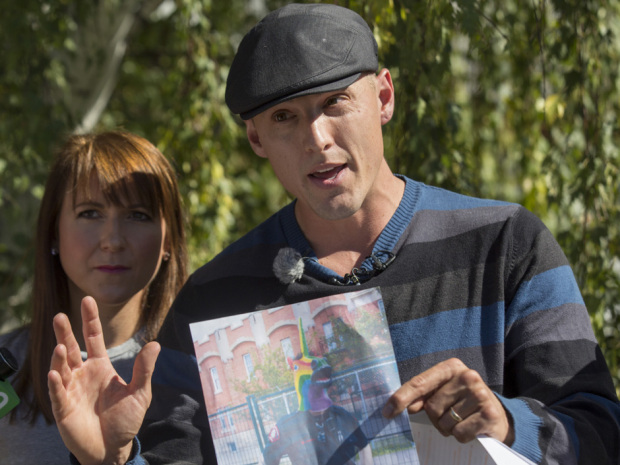Homeless brace for winter
UN envoy rips into Canada for allowing a ‘national crisis’
Published October 25, 2007 by Jeremy Klaszus in News
When Steve Matchett thinks back to January’s sub-zero temperatures, the lines on his face tighten into a grimace. Matchett, 43, had nowhere to live at the time. “It was cold,” he says, recalling the nights he’d line up with hundreds of other people to take a bus to a temporary shelter. “We’d stand out here for three hours in the coldest weather.”
Matchett is sitting outside the Drop-In Centre, where he’s staying once again after months of couch surfing and living in a camping trailer. He’s frank about his living situation: “It’s shitty.” He’s not the only one. The shelter hasn’t been able to keep up with demand in recent months, and winter hasn’t even arrived yet. “We’ve had to turn people away throughout most of September and October at night, and that’s unprecedented,” says Louise Gallagher, a spokesperson for the Drop-In Centre. “It’s a big concern for us.”
Even the UN has taken notice of Calgary’s growing homeless population. Miloon Kothari, the UN Special Rapporteur on adequate housing, did a two-week tour of Canada in October and afterwards called the housing situation a “national crisis.” Speaking in Ottawa on October 22, Kothari pointed out that in Calgary, about half of the people who stay in shelters have jobs. (Matchett, for example, has been working as a roofer.) “Canada is one of the richest countries in the world, which makes the prevalence of this crisis all the more striking,” said Kothari.
He also noted that before the federal and provincial budget cuts of the 1990s, Canada had a strong social housing problem. Now that new housing is almost entirely in the hands of the private sector, “Canada has one of the smallest social housing sectors among developed countries,” he said.
There are few hard numbers on homelessness in Calgary. The City of Calgary did a one-night head count in May 2006, and found over 3,400 people who were “visibly” homeless. However, many people like Matchett are homeless only for days or weeks at a time. “If you look at the numbers of people who experience homelessness in this city over the period of a year, a very conservative estimate would put us at about 15,000 for last year,” says Grant Neufeld, co-ordinator of the Calgary Housing Action Initiative. “I think a more realistic estimate would put us closer to 30,000. And the numbers have only grown in the past year.”
Artur Pawlowski, pastor of the downtown Street Church, says he’s seen roughly a 50 per cent increase in the homeless population from this time last year. “The saddest thing I see is that the working poor are the ones that are suffering the most,” says Pawlowski, whose church regularly serves meals to homeless people. “They come back from work and all the places (in the shelters) are already taken. So they’re trying to make it, but everything is against them.” Winter is especially brutal, he says.
November marks one year since a homeless artist froze to death on Calgary streets. Alvin Constant, a talented aboriginal painter, was found dead just two blocks from the Mustard Seed shelter on the same night the city opened a temporary shelter on the Stampede grounds. “Unless we get another mild winter, I expect we’ll see a greater number (of deaths) than we did last year,” says Neufeld.
The Mustard Seed, which has space for about 130 people a night, is opening a temporary shelter in the Foothills Industrial Park for another 300 to 400 people. Every evening people will ride buses from downtown to the shelter, which will be open from November 1 to May 1. The Drop-In Centre, meanwhile, can house 1,100 people a night. Once it’s full, people get turned away. “It’s really hard on staff,” says Gallagher. “And yet, because of our licence and insurance, when we go over those numbers we’re putting ourselves at risk.”
Rolling a cigarette outside the Drop-In Centre, Matchett knows there’s not much that separates him from the successful businesspeople driving past the Drop-In Centre in their SUVs. “There could be a lot of reasons a lot of people could end up here,” he says. “Things just take a twist. You just don’t bloody well know what can happen.” Still, he’s hoping for something better. “With all the money that’s being made in this province, people should be able to live a normal life. They shouldn’t have to worry about freezing to death or starving.”

